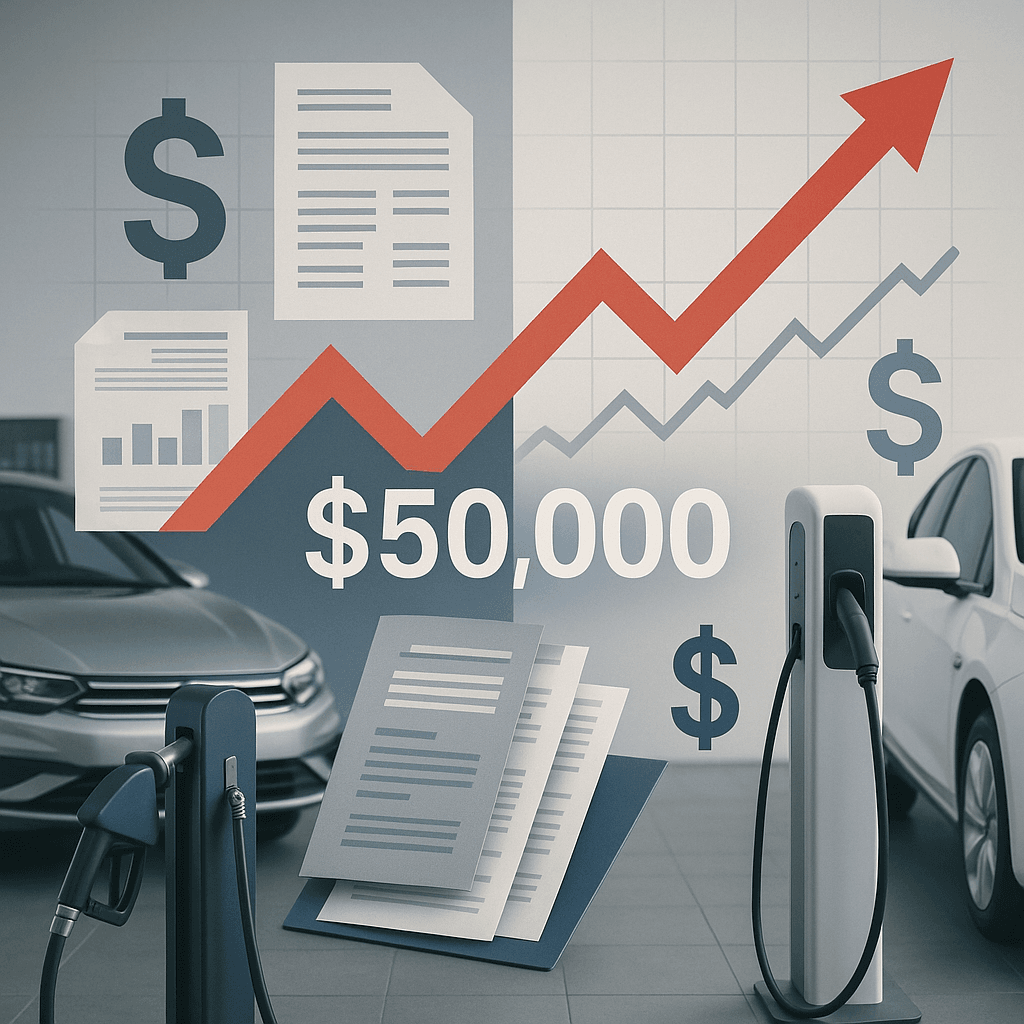Trump's anti-EV agenda is backfiring on American car buyers. The administration's regulatory whiplash - repeatedly changing efficiency standards every few years - is forcing automakers to spend billions redesigning vehicles and pushing those costs onto consumers. Average new car prices just topped $50,000 for the first time, while households face an extra $310 billion in gasoline costs by 2050 if current deregulation continues.
The $1.6 trillion US auto industry is caught in a regulatory storm that's making cars more expensive for everyone. Tesla stock may have surged on Trump's victory, but the broader automotive sector is grappling with policy whiplash that's driving up costs across the board.
Trump's EPA began dismantling the legal foundation for vehicle emissions standards in July, reversing course on regulations that automakers had spent years and billions preparing to meet. The move removes EPA authority to require cleaner vehicles, hampering efforts to reduce transportation's role as one of America's biggest carbon emission sources.
"Particularly in the last six months, I think 'chaos' is a good word because they're getting hit from every angle," David Cooke, senior associate director at Ohio State's Center for Automotive Research, told reporters about the industry's predicament.
The Alliance for Automotive Innovation, representing Ford, Toyota, and Volkswagen, sent a blunt letter to EPA in September declaring that current pollution rules stretching to 2027 "are simply not achievable" given the administration's policy reversals and EV incentive cuts.
But here's the twist: Transportation Secretary Sean Duffy claimed these moves would "lower vehicle costs and ensure Americans can purchase the cars they want." The reality tells a different story.
Kelley Blue Book data shows average new car sticker prices topped $50,000 for the first time in September. Every regulatory flip forces automakers to restart development cycles that typically span five years and cost billions. Those expenses get baked directly into vehicle prices.
"Every rule change adds time and expense to the development lifecycle, which ultimately gets baked into a car's price tag," according to industry analysis. The Trump administration responded to automaker complaints by zeroing out efficiency penalties - but companies are already planning for post-2028 scenarios where rules could flip again.
The cost impact extends beyond sticker prices. Energy Innovation's research found that repealing tailpipe standards could saddle households with an extra $310 billion by 2050, primarily through increased gasoline consumption. Even Trump's own EPA analysis admitted his moves would drive up gas prices due to less efficient vehicles burning more fuel.




